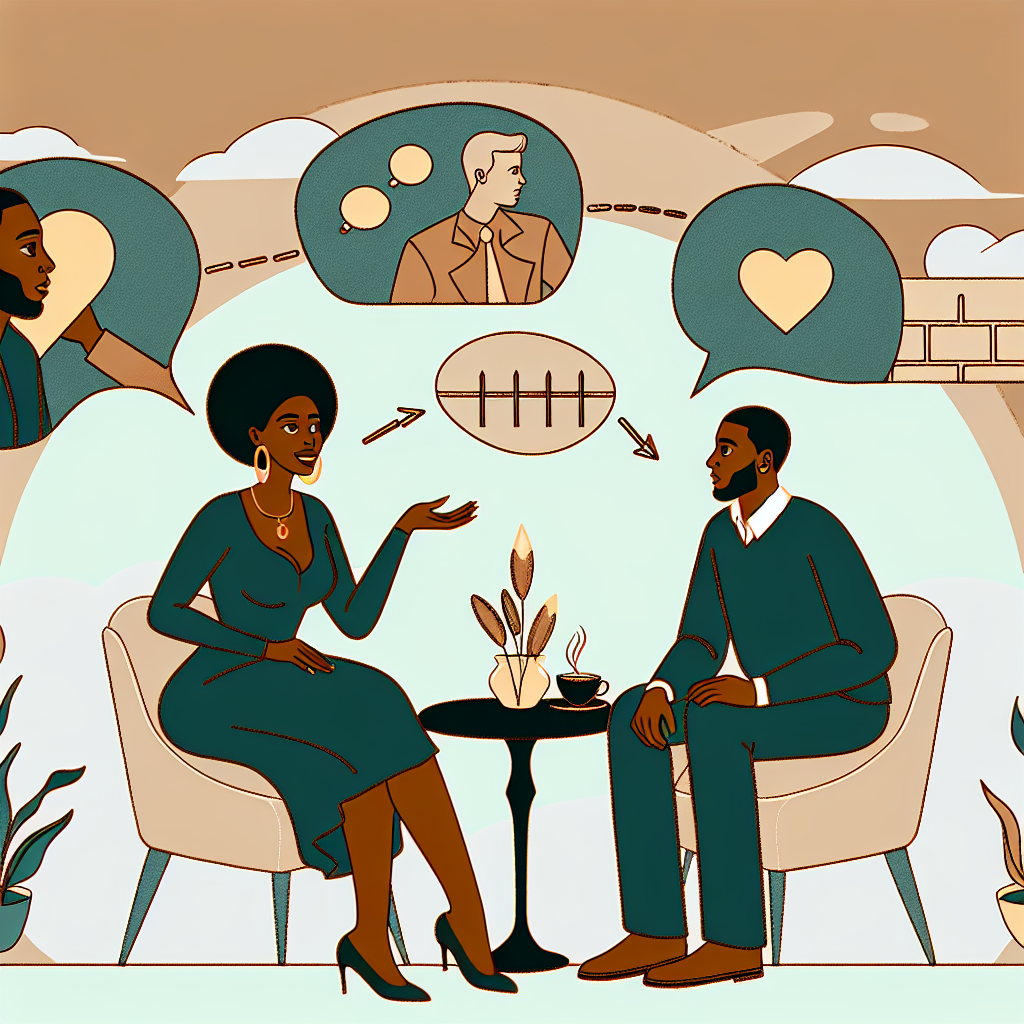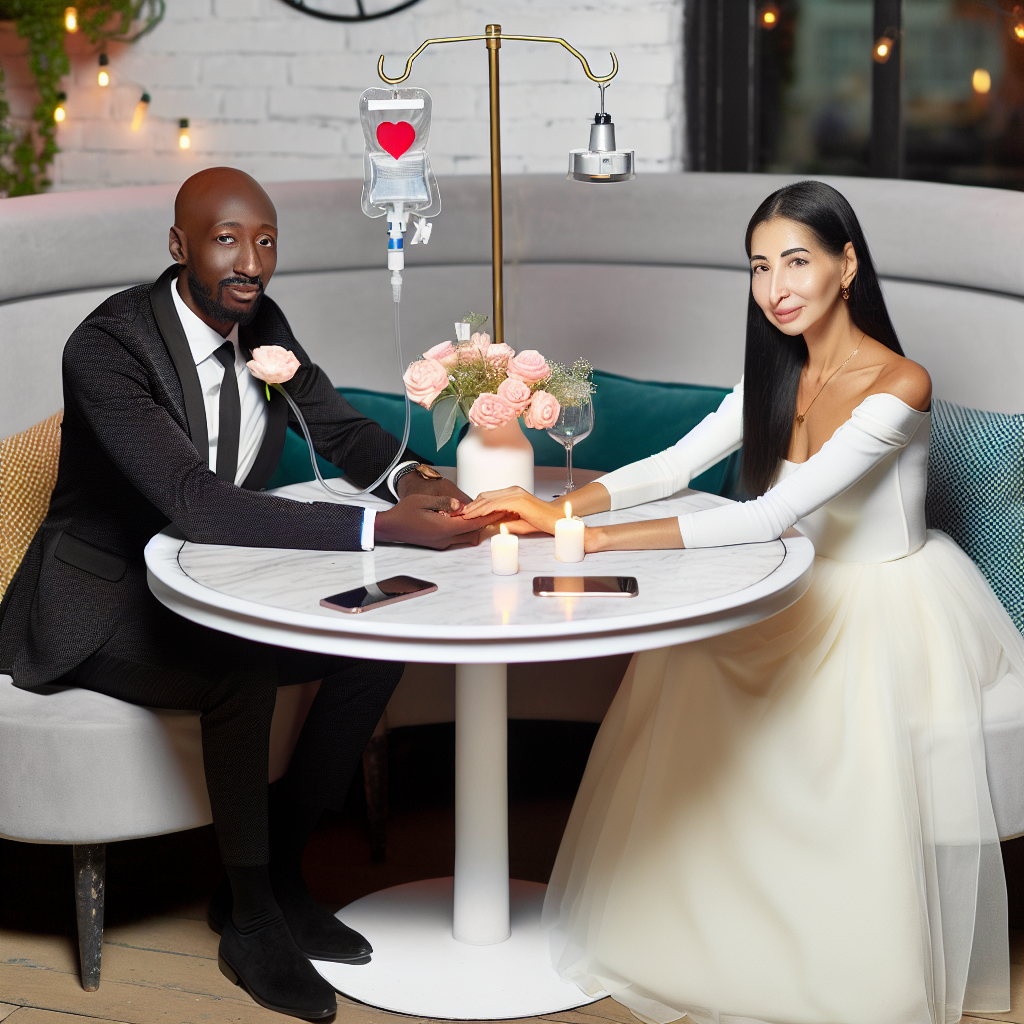Setting Dating Boundaries: Communication Guide
Introduction
Dating can be exhilarating, but it can also be complex and emotionally challenging. From first dates to serious relationships, healthy boundaries are essential for ensuring respect, comfort, and mutual understanding between partners. But what exactly are boundaries in dating? They are the personal limits that define what you are comfortable with, including your emotional, physical, and mental well-being. When effectively communicated, these boundaries foster trust, genuine connections, and balanced expectations within relationships.
The importance of setting dating boundaries cannot be overstated, regardless of your age or relationship goals. For singles aged 18 to 80s, understanding and asserting personal limits is crucial to fostering meaningful relationships while protecting emotional health. Clear boundaries create a foundation of respect, reducing misunderstandings and frustration while promoting happier, more fulfilling connections.
However, setting boundaries is only half the equation—effective communication is the key to ensuring they are understood and respected by potential partners. Many people struggle with discussing their limits due to fear of judgment, rejection, or conflict. But in reality, openly communicating your needs and expectations can help filter out incompatible matches while attracting those who resonate with your values.
This guide will explore how to recognize, establish, and communicate dating boundaries. It will also highlight how boundaries differ between emotional, physical, and digital interactions, and discuss strategies for handling boundary violations. By mastering this crucial dating skill, singles can enhance their relationships, reduce emotional distress, and cultivate deeper, healthier romantic connections.
The Psychology and Science Behind Setting Relationship Boundaries
Research in psychology affirms that healthy boundaries contribute to relationship satisfaction and emotional well-being. According to Dr. Henry Cloud and Dr. John Townsend, authors of *Boundaries in Dating*, setting limits in dating helps in making wise relationship choices and avoiding unnecessary heartbreak. Their research highlights that people who set clear boundaries tend to develop deeper emotional connections, as they can express their needs honestly without feeling manipulated or taken for granted.
A study published in the *Journal of Social and Personal Relationships* found that individuals who express their relational needs and set clear expectations tend to experience higher relationship satisfaction and lower stress levels. The study further illustrates that setting personal limitations allows partners to navigate relationships more effectively, fostering emotional security and trust.
Additionally, research by Dr. Brené Brown, a research professor at the University of Houston, emphasizes the role of vulnerability and clear boundary-setting in forming authentic connections. She argues that when individuals communicate their personal boundaries, they create space for genuine intimacy rather than forced relationships built on assumptions or unmet expectations. This highlights the importance of boundaries as a way not only to protect oneself but also to nurture deeper and more meaningful relationships.
Boundaries also have a significant impact on mental health. A study by the American Psychological Association (APA) found that setting healthy boundaries helps reduce emotional distress, anxiety, and burnout in personal relationships. Without them, individuals are more prone to stress and unhealthy dynamics, potentially leading to toxic relationships.
Practical Steps to Establish and Communicate Dating Boundaries
1. Define Your Boundaries
Before entering the dating scene, take the time to assess your comfort levels in emotional, physical, and digital aspects of dating. Knowing where you stand on issues like communication frequency, personal space, or physical intimacy allows you to be confident when conveying your boundaries.
2. Communicate Boundaries Early On
It’s never too soon to discuss your personal limits. Whether it’s on a first date or during early conversations, gently asserting where you stand can help ensure both individuals are aligned in expectations.
3. Use Assertive and Respectful Communication
Instead of assuming your partner will understand your needs automatically, state them clearly and respectfully. Instead of saying, “I don’t like it when you text so much,” offer a more constructive approach: “I appreciate communication, but I also need some personal space throughout the day.”
4. Reinforce Boundaries When Necessary
If someone crosses a boundary, acknowledge it calmly but firmly. Reinforce your limits and assess whether the person respects them. A healthy match will listen, acknowledge, and adjust their behavior accordingly.
5. Be Open to Conversations and Compromises
While boundaries are personal, relationships naturally involve compromise. Balance is key, so listen to your partner’s boundaries as much as you expect your own to be honored.
6. Walk Away When Boundaries Are Repeatedly Disrespected
A healthy relationship consists of mutual understanding and respect. If a potential partner continuously disregards your boundaries, it’s a red flag. Do not hesitate to move on from relationships that harm your emotional well-being.
Conclusion: Enhance Your Relationships with Clear Boundaries
Setting and communicating dating boundaries is a fundamental aspect of building healthy relationships. From emotional limits to physical and digital boundaries, being clear about what you need establishes mutual respect, reduces relationship stress, and leads to stronger, more fulfilling connections. Studies affirm that clear boundary-setting enhances emotional well-being, strengthens trust, and contributes to long-term relationship success. Whether you’re just beginning your dating journey or seeking deeper relationships later in life, practicing transparent and confident communication about your boundaries is an empowering step toward finding meaningful love.
References
– American Psychological Association (2021). Building and maintaining healthy boundaries for mental health.
– Brown, B. (2015). *Rising Strong: How the Ability to Reset Transforms the Way We Live, Love, Parent, and Lead*. Spiegel & Grau.
– Cloud, H., & Townsend, J. (2000). *Boundaries in Dating: How Healthy Choices Grow Healthy Relationships*. Zondervan.
– Murray, S. L., & Holmes, J. G. (2011). *Interdependent minds: The dynamics of close relationships*. Journal of Social and Personal Relationships.
Summary:
This comprehensive guide explores the importance of setting and communicating healthy boundaries in dating. It outlines the psychological and scientific foundations of boundary-setting, providing practical steps to define, communicate, and enforce personal limits. By fostering open dialogue and mutual respect, individuals can cultivate deeper, more fulfilling romantic connections and protect their emotional well-being.

Dominic E. is a passionate filmmaker navigating the exciting intersection of art and science. By day, he delves into the complexities of the human body as a full-time medical writer, meticulously translating intricate medical concepts into accessible and engaging narratives. By night, he explores the boundless realm of cinematic storytelling, crafting narratives that evoke emotion and challenge perspectives. Film Student and Full-time Medical Writer for ContentVendor.com




